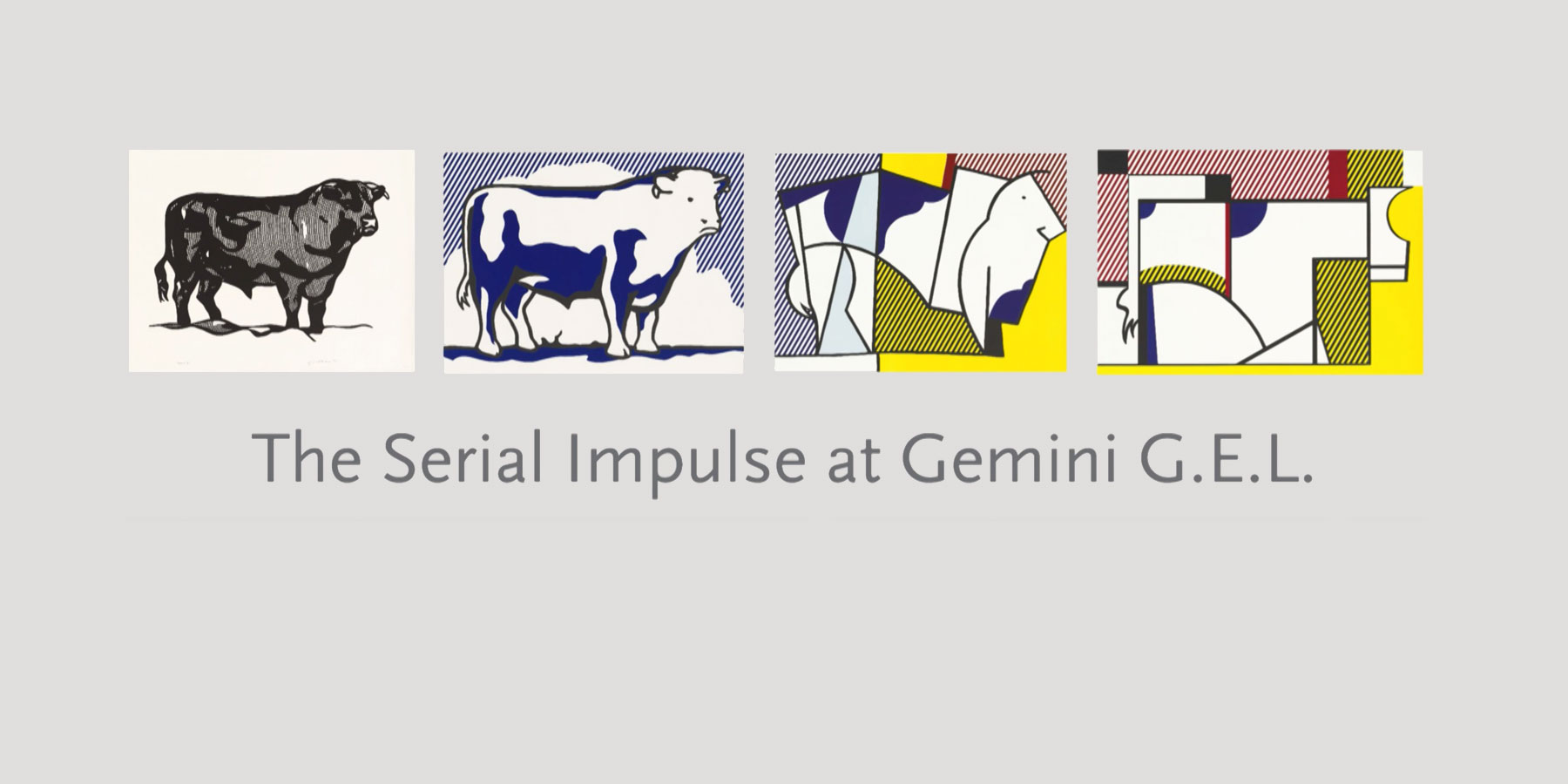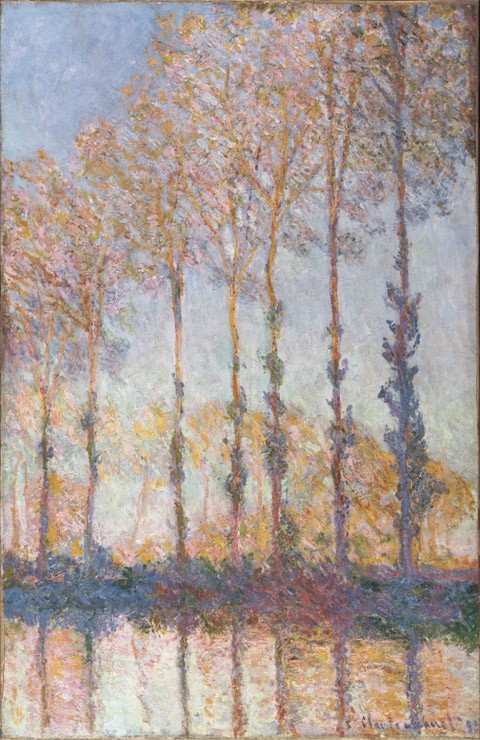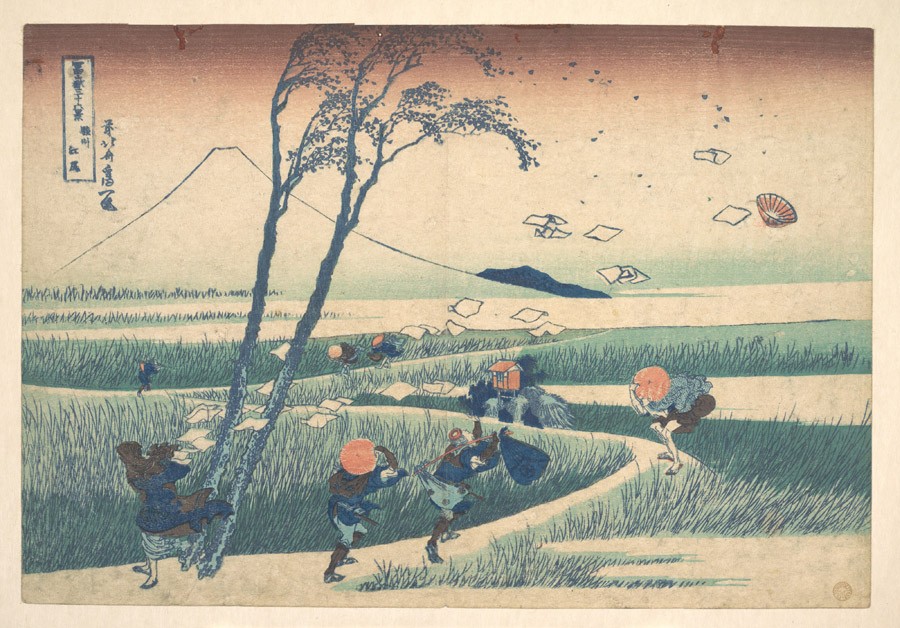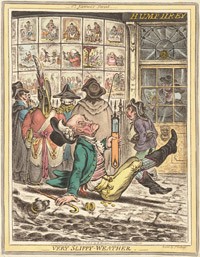"I loved the idea of the rain as it hit the ink [and] it would make the ink run. The moment I thought of the idea I couldn't resist it."—Hockney, 1973
In tackling weather as a subject, David Hockney (British, born 1937) looked to 19th-century Japanese u-kioye woodblock prints by Katsushika Hokusai and impressionist paintings by Claude Monet. Both artists depicted a wide range of atmospheric and lighting conditions in serial formats—Hokusai most famously in his prints of Mount Fuji and Monet in his well-known paintings of grain stacks, Rouen Cathedral, and other subjects. Hockney’s Snow, in which repetitive horizontal bands of tonal gradation suggest spatial recession, is most explicitly indebted to Japanese woodcuts, while the hazy silhouettes of Hockney’s Mist recall Monet’s painting of poplar trees on the River Epte.
Challenged by the task of depicting wind, Hockney looked to Hokusai’s Ejiri in the Suruga Province, from which he adopted the motif of sheets of paper caught in a sudden breeze. Hockney’s Wind, illustrates the serial relationship between The Weather Series prints, as Snow, Mist, Sun, and Rain are shown whirling in a Los Angeles gust.











